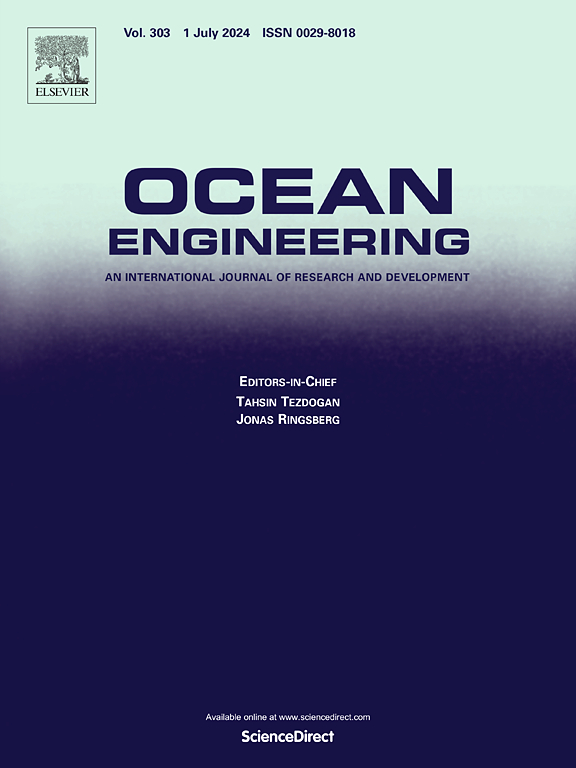Design and experimental tests for novel shapes of floating OWC wave energy converters with the additional purpose of breakwater
IF 4.6
2区 工程技术
Q1 ENGINEERING, CIVIL
引用次数: 0
Abstract
The oscillating water column (OWC) is a type of wave energy converter (WEC) that captures the energy of incoming waves. As waves reach the structure, their movement causes the water within an enclosed chamber to oscillate, creating airflow that powers a turbine, generating electricity. This principle can be applied to the design of breakwaters, which can protect marine structures such as floating solar farms and wind turbines. This study involved designing two types of buoyancy chambers for the OWC-WEC and two underneath baffles with adjustable spacing. These configurations were tested in a wave tank to assess wave energy capture, wave attenuation, hydrodynamics, and mooring forces. The experimental results demonstrate that a baffle spacing of 1 m, combined with a V-type buoyancy chamber, significantly enhances the wave energy capture and wave attenuation performance of the OWC. This configuration achieves up to a 57.09 % increase in the capture width ratio and a maximum reduction of 20.88 % in the wave transmission coefficient. Furthermore, mooring line forces are reduced by 21.86 %, while the baffles effectively mitigate pitch motion. Notably, greater pitch reduction improves the capture width ratio. In conclusion, this study introduces a novel wave energy converter, providing key insights for future marine energy development.
求助全文
约1分钟内获得全文
求助全文
来源期刊

Ocean Engineering
工程技术-工程:大洋
CiteScore
7.30
自引率
34.00%
发文量
2379
审稿时长
8.1 months
期刊介绍:
Ocean Engineering provides a medium for the publication of original research and development work in the field of ocean engineering. Ocean Engineering seeks papers in the following topics.
 求助内容:
求助内容: 应助结果提醒方式:
应助结果提醒方式:


